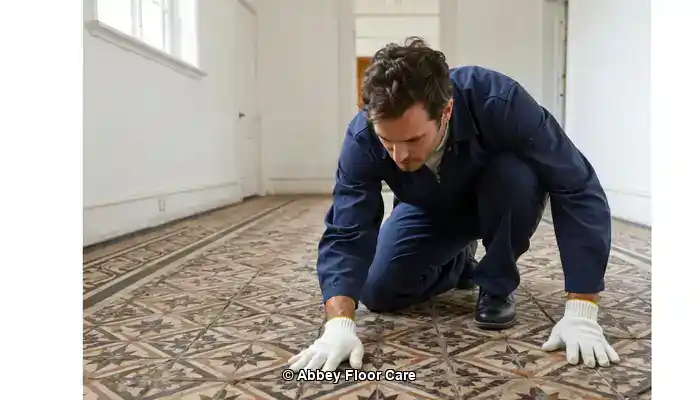
Last Updated on October 30, 2025 by David
Proven Techniques to Restore the Vibrancy of Faded Victorian Mosaic Tiles
- Victorian mosaic tiles often suffer from colour loss due to a mix of entrenched dirt, aging surface coatings, and regular wear, and not merely from the effects of time.
- Using harsh chemicals and aggressive scrubbing techniques can lead to irreversible damage to the original pigments, particularly in encaustic and geometric styles, resulting in permanent colour loss.
- Safe restoration practices commence with a meticulous deep cleaning process utilizing pH-neutral solutions and low-speed rotary machines fitted with soft brushes to maintain the integrity of the tiles.
- It is essential to carefully strip away old sealers and waxes to uncover the true condition of the tile surfaces, which often remain concealed beneath layers of dirt and grime.
- Colour enhancement can be achieved with breathable, stone-safe sealers that amplify the natural hues without producing a glossy finish that detracts from the tiles' authenticity.
- Expert restoration techniques can rejuvenate the original pigments without the need for repainting or the application of artificial colours, thus preserving the historical accuracy of the tiles.
- Maintaining restored tiles requires gentle cleaning methods and a conscious avoidance of acidic or bleach-based products that could damage the surface further.
- Heritage-sensitive methods are vital to protect both the aesthetic and historical significance of the tiles during the restoration process.
Mastering the Restoration of Victorian Tiles to Reclaim Their Original Beauty

Abbey Floor Care restoring the colour to a Victorian clay tile floor using a colour-enhancing impregnating sealer.
Victorian encaustic and mosaic tiles hold significant value in British architectural heritage, renowned for their intricate craftsmanship and unique colour palettes. These palettes are composed of mineral pigments that are embedded directly into the clay tile bodies, ensuring a long-lasting and vibrant finish that can withstand time and environmental factors.
Expert Insights for Daily Care of Victorian Tiles

Fila Pro Floor Cleaner
|
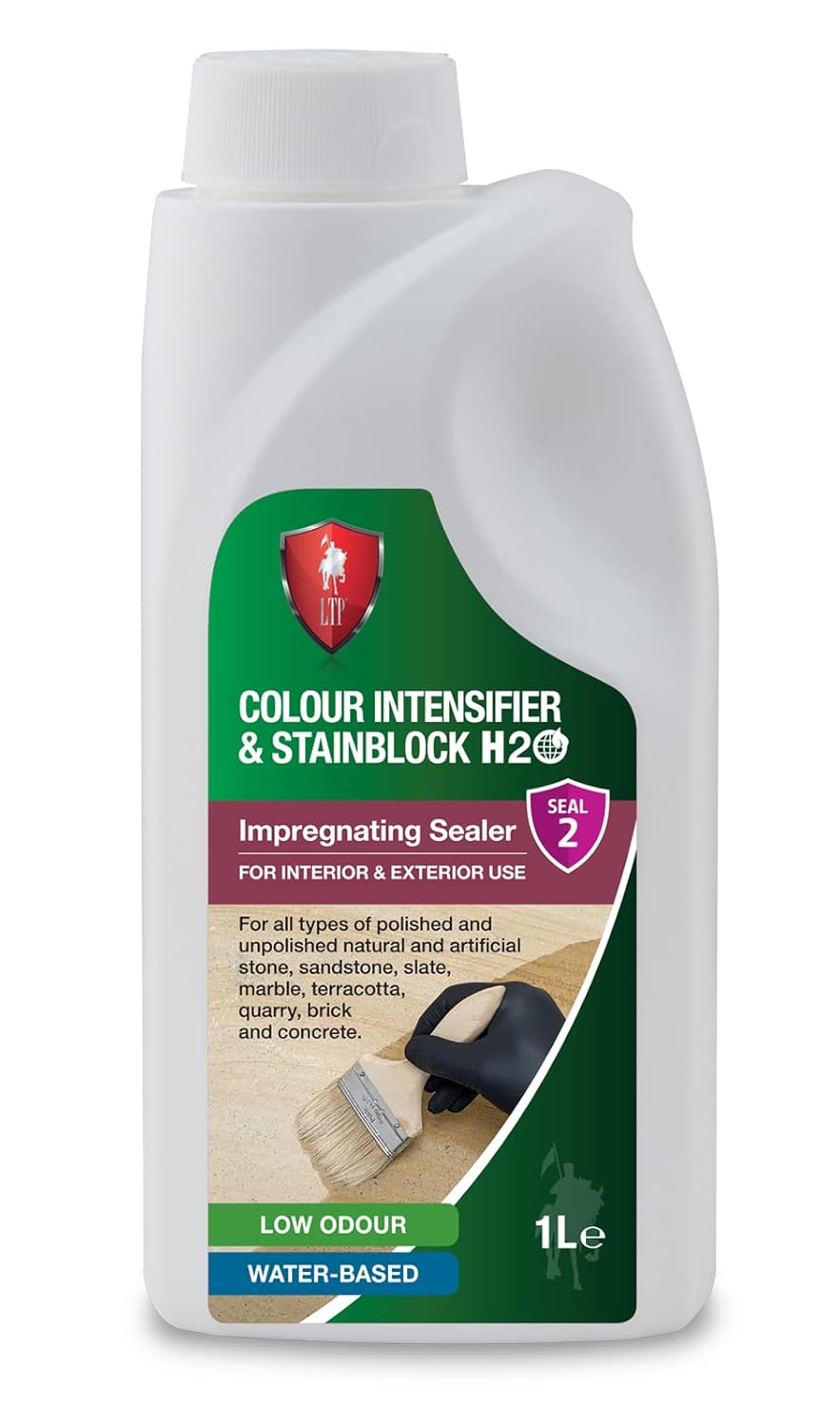
LTP Colour Intensifier & Stainblock H20
|

Vileda H2PrO Spin Mop System
|
Over time, however, these tiles may lose their visual impact due to various factors such as surface wear, chemical effects, and environmental influences. Restoring their original vibrancy is a specialized task that requires a comprehensive understanding of the materials, historically appropriate techniques, and high-quality products designed for tile restoration. This intricate process not only respects the heritage value of each tile but also significantly enhances its visual appeal, ensuring that these historic features continue to be valued and admired.
Identifying the Factors Leading to the Fading and Dulling of Victorian Mosaic Tiles
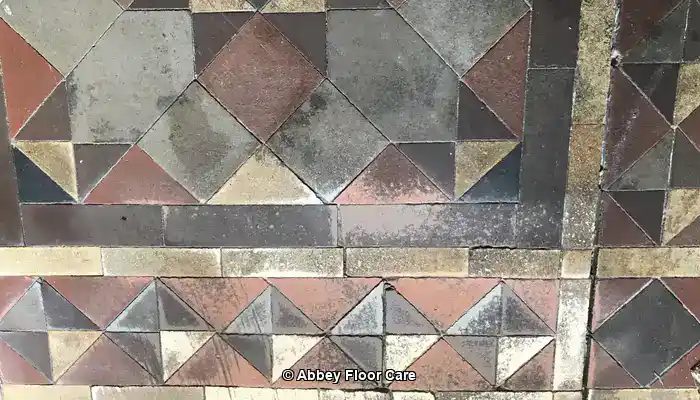
Example of Victorian Clay Tile Floor dulled through surface wear and damage.
Despite the integral nature of the pigments, a variety of factors contribute to the fading and dulling of these exquisite surfaces:
- Accumulated dirt and grime: Ongoing foot traffic deposits fine particles and oils that penetrate porous surfaces, scattering light and dulling vibrant colours.
- Wax and polish buildup: Layers of non-breathable wax or sealants trap moisture, resulting in a cloudy or yellowed appearance that obscures the original beauty of the tiles.
- Moisture-driven issues: Many Victorian tiles were laid over subfloors without damp-proof membranes, leading to rising damp that transports soluble salts. These salts crystallize on the tile surface as efflorescence, further masking the original tones.
- Physical abrasion: Small scratches from years of use disrupt smooth light reflection, greatly diminishing the tiles' visual richness and depth.
Effective restoration must address each of these contributors with care, ensuring that the historic integrity of the tiles is preserved while rejuvenating their appearance to restore their former glory.
The Critical Role of Breathability in Floors Lacking Damp-Proof Membranes
Numerous Victorian tiled floors are situated over older subfloors that lack a damp-proof membrane (DPM), necessitating that their natural clay structure remains permeable to facilitate moisture evaporation from the subfloor. Non-breathable wax coatings or film-forming sealers obstruct this critical evaporation pathway, leading to moisture accumulation beneath the surface. This entrapment results in salts and humidity that cause efflorescence, surface mineral degradation, and an undesirable effect known as wax blooming—a whitish film or haze on the tile. Restoration strategies must prioritize breathable impregnating sealers that not only protect tiles but also allow moisture vapour to migrate freely, thus preventing long-term damage and preserving the elegance of the tiles.
Key Pigments and Components Found in Victorian Tiles: An In-Depth Exploration
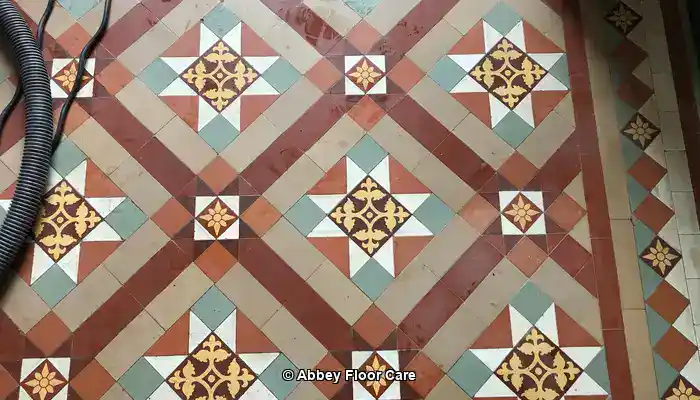
Examining the Mineral Oxide Pigments Within Victorian Tiles
Victorian mosaic and encaustic tiles derive their unique earthy hues from mineral oxide pigments embedded deep within the clay. These pigments not only contribute to durability but also significantly enhance the depth and richness of each colour. The primary pigments incorporated include:
- Iron oxide: providing terracotta reds, rust browns, and soft ochres.
- Manganese: yielding deep browns and rich blacks.
- Cobalt: imparting a variety of blue shades.
- Chromium: that creates natural green tones.
The Firing and Fusion Process: Critical for Tile Durability
During the manufacturing process, tiles undergo firing at temperatures nearing 1100°C, resulting in the vitrification of the clay and the fusing of pigments deep into the tile body. This method ensures that the colour permeates throughout the tile rather than merely resting on the surface, resulting in a long-lasting vibrancy that stands the test of time and the rigours of daily use.
Understanding the Characteristics of the Porous Unglazed Finish in Victorian Tiles
Victorian tiles generally showcase a porous, unglazed matte finish, which contributes to their natural appearance. However, this porosity also renders the tiles absorbent and susceptible to surface contamination and moisture. Consequently, meticulous cleaning and maintenance routines are vital to preserving their integrity and aesthetic appeal, ensuring these tiles continue to be a stunning feature in any environment.
Understanding the Variability in Colour Durability of Victorian Tiles
Natural earth pigments, particularly in red and yellow tiles, contain fewer mineral additives compared to darker colours like black, which are composed with manganese. This difference indicates that red and yellow tiles are less durable and more prone to surface dishing under heavy foot traffic. Such wear manifests as shallow depressions in high-traffic areas, leading to uneven colour intensity and compromised surface flatness. Recognizing this variability is crucial for tailoring restoration techniques to meet each tile's specific requirements.
Strategic Considerations for Planning Effective Restoration Efforts
Understanding pigment composition and tile wear patterns is essential when developing restoration plans. Softer-toned tiles necessitate gentler cleaning methods and specially formulated impregnating sealers that respect their physical properties while enhancing their colour. In contrast, darker, more robust tiles can endure more intensive cleaning but still require breathable, colour-enhancing protection to maintain their vibrancy over time. This strategic approach is vital for ensuring the longevity and aesthetic quality of the restored tiles.
Thorough Cleaning Techniques for Victorian Mosaic Tiles: A Detailed Approach
Effective cleaning is fundamental to restoring Victorian encaustic and mosaic tiles to their original vibrancy. However, this process demands a specialized approach that goes beyond basic pH-neutral detergents. Professional restorers employ meticulously formulated alkaline cleaners and mechanical techniques to break down heavy soiling and old residues without compromising the historic tile fabric.
Initial Debris Removal Techniques for Optimal Tile Care
The cleaning process begins with the careful removal of all loose dirt and grit using soft brushes or vacuuming with brush attachments. This preliminary step is crucial for preventing scratches on the delicate tile surfaces during subsequent cleaning phases, ensuring that the restoration process starts on a clean slate, free from debris that could interfere with the intricate details of the tiles.
Utilizing Alkaline Cleaners for Comprehensive Soil Removal
Unlike pH-neutral cleaners, which may lack the chemical strength to effectively tackle ingrained fatty acids and organic soils, alkaline cleaners are essential for thoroughly breaking down household oils, grease, and sticky residues commonly found on tile surfaces and within grout lines. These alkaline formulations dissolve the binding agents of dirt, sugars, and fats, allowing for their effective removal while maintaining compatibility with the mineral composition of Victorian tiles. Professional-grade alkaline products, such as PS87 PRO or custom formulations from heritage cleaning specialists, are typically used in diluted form. It is essential to remember that, even when using alkaline cleaners, caution is paramount, and spot testing is advisable to ensure no adverse effects occur to the tiles.
Mechanical Agitation: Boosting Cleaning Effectiveness
Mechanical action greatly enhances cleaning efficacy. Low-speed rotary scrubbers equipped with red or occasionally green non-abrasive pads are commonly employed to agitate soils from small pits, tile surfaces, and grout lines. These pads clean thoroughly while protecting the integrity of tile edges and delicate surface details, ensuring that the tiles retain their original charm and do not suffer any damage during the cleaning process.
Effective Removal of Waxes and Exotic Sealants: A Delicate Process
Years of use often result in the buildup of old waxes and sealants, particularly from DIY attempts using unsuitable products. Water-based cleaners—whether alkaline or mildly acidic—are preferred for effectively removing these residues without damaging the tile’s mineral structure. However, stubborn ‘exotic’ or solvent-resistant coatings require targeted solvent-based removers such as Lithofin Wax-Off or LTP Solvex. These solvents effectively soften and emulsify waxes and old sealants but must be handled with care by professionals trained in their safe application and disposal, ensuring the preservation of the tile's integrity and historical value.
Thorough Rinsing and Drying Techniques: Ensuring a Clean Finish
After chemical cleaning, thorough rinsing is critical to eliminate all cleaning residues. Multiple rinses with clean water, complemented by wet vacuum extraction, guarantee that no detergent or solvent traces remain to interfere with subsequent restoration coatings. Drying times vary based on environmental conditions, such as humidity, surface type, and moisture levels. Restoration experts consistently utilize moisture meters to confirm that the tiles are completely dry before applying any impregnating sealers or protective treatments. This careful approach prevents moisture entrapment, which could otherwise lead to efflorescence, staining, or damage beneath sealed layers.
Benefits of Comprehensive Cleaning: Uncovering the True Condition of Tiles
A thorough cleaning process reveals the actual condition of the tiles by eliminating visual obstructions. It exposes areas that may require repair and provides a clean, receptive surface for colour-enhancing impregnators or other restorative products. This meticulous preparation is fundamental to the success and longevity of Victorian mosaic tile restoration, ensuring that every tile shines as it was originally intended and enhancing the overall aesthetic of the space.
Enhancing Colour with Premium Impregnating Sealers: A Crucial Restoration Step
Restorers utilize colour-enhancing impregnating sealers crafted by <a href="https://amzn.to/40G0qka">LTP</a> and Lithofin, brands renowned for their cutting-edge, heritage-approved formulations. Unlike superficial coatings, these sealers:
- Penetrate deeply into tile pores to physically enrich colour by altering light refraction, which enhances the tile's natural beauty.
- Maintain vapour permeability, which is essential for moisture escape, particularly critical in older floors lacking DPM layers to avoid moisture damage.
- Provide durable protection against stains and foot traffic without altering the natural texture or gloss of the tiles, thus maintaining their integrity.
- Are applied in multiple light coats, with each layer allowed to penetrate before the next is applied, ensuring complete uniformity and effectiveness of the restoration process.
These sealers directly address fading by restoring vibrancy while preserving the historical floor’s breathable nature, ensuring the tiles remain stunning for years to come and that their historical significance is upheld.
Precision Repair Techniques for Damaged Tiles and Colour Tinting: Importance of Detail
Tiles that exhibit chips, cracks, or missing pieces necessitate meticulous repair using tinted epoxy or lime-based mortars, colour-matched with natural mineral oxides to achieve a seamless finish. Restoration experts frequently source matching replacement tiles from salvage archives to preserve pattern continuity throughout the floor. Colour tinting involves carefully applying earth-pigment-infused wax or resin mixtures to sensitively blend worn or missing pattern areas while respecting tile breathability and reversibility. This scrupulous attention to detail is vital for achieving flawless results that honor the original craftsmanship and ensure longevity.
Best Practices for Effective Tinting: Achieving a Seamless Integration
- Utilize small, controlled applications to avoid over-colouring and ensure precision, creating a seamless blend with the surrounding tiles.
- Conduct patch testing on inconspicuous areas before full application to assess compatibility and appearance, mitigating the risk of colour mismatches.
- Ensure compatibility with the impregnating sealers applied to the entire surface to maintain a cohesive finish that respects the tile's aesthetic.
Essential Long-Term Maintenance Strategies for Restored Victorian Mosaic Floors: Sustaining Their Beauty
To preserve the restored colour and condition of Victorian mosaic tiles, ongoing care is paramount:
- Routine cleaning with pH-neutral, non-abrasive detergents specifically formulated for historic tiles helps maintain their integrity and visual appeal.
- Implement preventive measures, such as placing entrance mats, to minimize dirt entry and protect the tiles from damage.
- Address liquid spills promptly, especially acidic substances such as vinegar or wine, to prevent surface etching and maintain the tiles' pristine appearance.
- Regularly reapply breathable impregnating sealers every 3–5 years or as wear dictates to ensure ongoing protection against dirt and moisture.
- Monitor floors for signs of efflorescence or moisture ingress, which may indicate underlying damp issues requiring immediate attention to prevent further damage.
Avoiding Common Restoration Mistakes: Essential Practices for Successful Outcomes
- Refrain from using wax treatments that can hinder breathability, induce efflorescence, or cause wax blooming, thus ensuring the longevity of the restoration.
- Avoid applying acrylic or polyurethane sealants that trap moisture and lead to degradation of the tile structure, compromising their integrity.
- Limit the use of harsh chemical cleaners, which can erode clay and pigments over time, further damaging the tiles.
- Never repaint tiles; paint films alter their visual and physical properties and are not reversible, leading to complications in future maintenance.
- Recognize and address issues in older subfloors before sealing to prevent future damage and ensure a solid foundation for the restoration.
Showcasing Successful Restoration Projects: Illustrative Examples of Best Practices
Real-life examples highlight the successful implementation of these restoration principles:
Victorian Hallway Restoration Project in Sheffield: A Practical Case Study
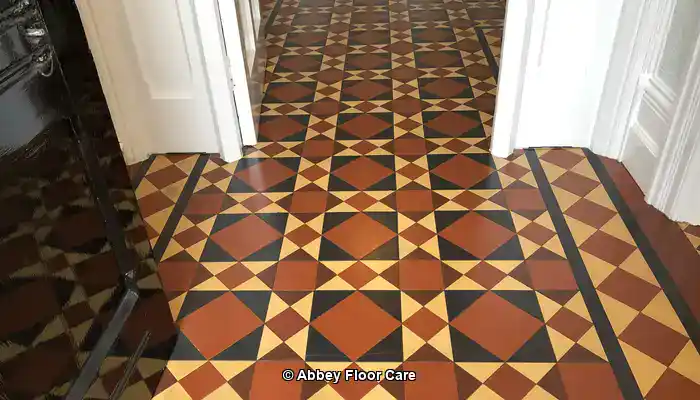
Our comprehensive cleaning procedure effectively eliminated years of wax and grime, followed by the precise application of a Lantania Avo colour-enhancing impregnating sealer, which visibly deepened the tile colours. This was further complemented by the application of an acrylic topical sealer to provide surface protection for floors installed over a damp-proof membrane, ensuring that the restoration was both visually appealing and functional for long-term use.
A Restored Civic Mosaic Floor Project in Chesterfield: Restoration in Action

Following a thorough cleaning and the removal of old topical sealers, the floor was sealed with an LTP Colour Enhancing Impregnating sealer. The surface was subsequently protected with a wax, applied with precision to seamlessly integrate the clay tiles into the historic fabric of the building, allowing the beauty of the original craftsmanship to truly shine through.
Preserving Heritage Through Expert Restoration Techniques for Victorian Mosaic Tiles
Restoring the colour and pigment of Victorian mosaic tiles is a complex endeavor that balances material science, craftsmanship, and sensitivity to heritage values. By employing premium impregnating colour-enhancing sealers from industry leaders such as Dry Treat, Lantania, and Lithofin, one can guarantee long-term breathability, protection, and colour vibrancy. Through skilled cleaning, careful repair, and dedicated maintenance, we can uphold authenticity while rejuvenating these historic floors for future generations to appreciate, ensuring that their beauty and significance endure for many years.
Frequently Asked Questions About Victorian Mosaic Tile Restoration
What defines Victorian mosaic tiles and what makes them significant?
Victorian mosaic tiles refer to ornamental tiles that became popular in the 19th century, renowned for their vibrant colours and intricate designs. They were extensively used in both public and private buildings, making them an integral part of architectural history and cultural heritage.
What steps are involved in effectively restoring faded Victorian mosaic tiles?
Restoring faded Victorian mosaic tiles involves a comprehensive process of deep cleaning, repairing any damages, applying new pigments to reestablish the original colours, and sealing the tiles to protect against future wear and environmental influences.
What materials are essential for successful tile restoration?
Key materials for tile restoration include specialized cleaning solutions, pigments, adhesives, grout, and protective sealants, all meticulously selected for compatibility with the original tiles to ensure the best results and longevity of the restoration.
How long does the tile restoration process typically take?
The duration of tile restoration can vary based on the size and condition of the area being restored, typically ranging from a few days for smaller projects to several weeks for larger restorations, depending on the complexity of the work involved.
Can I undertake the restoration myself or should I hire a professional?
Yes, smaller restoration projects can be DIY if you possess the necessary skills and tools. However, more complex repairs necessitate expertise to ensure quality results and to avoid potential damage to the tiles.
What are the costs associated with restoring Victorian mosaic tiles?
Costs can fluctuate significantly based on project size and condition, ranging from a few hundred to thousands of pounds for comprehensive restorations, reflecting the level of work and expertise required.
How do I choose the right restoration expert for my project?
Seek out restoration professionals with a proven track record in historical projects, positive reviews, and a commitment to using authentic materials and techniques that align with your specific restoration goals.
What challenges do restorers commonly encounter during the process?
Restorers frequently face challenges such as accurately matching original colours, repairing damaged tiles, and ensuring the longevity of the restoration work to maintain the tiles' structural and aesthetic integrity.
What steps can I take to effectively maintain restored tiles?
Regular cleaning with pH-neutral products, avoiding harsh chemicals, periodic resealing, and promptly addressing any damage are crucial for maintaining restored tiles in optimal condition and preserving their beauty.
What innovations are currently emerging in the field of tile restoration?
Recent innovations include advanced cleaning solutions, new types of sealants, and digital technology for precise colour matching and pattern replication in restoration projects, significantly enhancing the effectiveness of restoration efforts.
The Article Restoring Colour and Pigment to Faded Victorian Mosaic Tiles was first found on https://www.abbeyfloorcare.co.uk
The Article Restoring Victorian Mosaic Tiles: Reviving Colour and Pigment appeared first on https://fabritec.org
The Article Victorian Mosaic Tiles Restoration: Reviving Color and Hue Was Found On https://limitsofstrategy.com
The Article Victorian Mosaic Tiles Restoration: Revitalising Colour and Tone First Appeared ON
: https://ad4sc.com





No responses yet